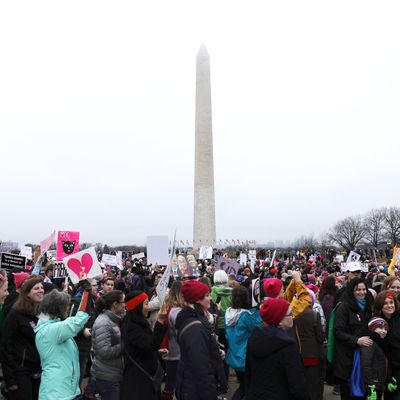
The most contentious part of the various Women’s Marches that took place across the country Saturday might very well have been crowd sizes. The Women’s March on Washington in particular drew far more attendees than expected — so many, in fact, that it couldn’t really march. And it certainly drew a larger crowd than Donald Trump’s inauguration, try as the Trump administration might to deny it.
It’s proven difficult to figure out the exact number of marchers who turned out in each city, but after careful analysis FiveThirtyEight estimates that 3.2 million people marched on Saturday in 300 cities across the United States. By comparison, the tea party marches in 2009 that indicated the beginning of the backlash against Obama drew an estimated 310,000 people in 350 cities.
Their guess is based on a combination of data from local officials and estimates from march officials. FiveThirtyEight found that march officials probably exaggerated crowd sizes by 40 percent (which is pretty typical), so if they used an estimate from organizers, they discounted that number correspondingly. For that reason it was difficult to figure out in which city the largest march took place — it was probably Washington, D.C., but because of inflation adjustments it might’ve been in New York or Los Angeles, too. The third-largest marches took place in Boston (175,000 marchers), Chicago (150,000), and Seattle (120,000), while marches in cities like Atlanta, Philadelphia, and Austin had an average of about 50,000 marchers. The city with the smallest march was Olympia, Washington, with 10,000.
Interestingly, FiveThirtyEight pointed out the majority of marches (80 percent) took place in states Hillary Clinton won during the presidential election. Only 11 percent of marches were held in swing states, and 10 percent took place in red states. What’s more, most marches were held in big or “mega” cities, which also tend to go blue. “At a macro level, Democrats have every right to be encouraged about the Women’s Marches,” FiveThirtyEight’s Nate Silver wrote. And although he takes them as a sign that the “Democratic Party needs broader geographic appeal than what it has right now,” the massive turnout is a good start.




